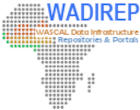Livelihood zoning consists in identifying areas where rural people share relatively homogeneous living conditions, on the basis of a combination of biophysical and socio-economic determinants. The main criteria to establish livelihood zones are: the predominant source of income (livelihood activities); the natural resources available to people and the way they are used; and the prevailing agroclimatic conditions that influence farming activities. Patterns of livelihood vary from one area to another, based on local factors such as climate, soil or access to markets. The analysis delineates geographical areas within which people share similar livelihood patterns: source of living, access to food, farming practices, including crops, livestock and access to markets.
The map of livelihood zones is the main output from a participatory mapping workshop and forms the basis for the overall AWM assessment. It describes and geographically locates the different country livelihood contexts, focusing on the main smallholders’ livelihood strategies, their water-related problems and other constraints
for development, and the role agricultural water management plays for their livelihoods. An attribute table provides a detailed description of each livelihood zone.
(Source: FAO, 2011)
Data and Resources
| Field | Value |
|---|---|
| Modified | 2025-05-14 |
| Release Date | 2019-09-27 |
| Identifier | c15ef3ef-f03b-4b77-9a23-addcb17ca78d |
| Covered Regions/Countries |

![[Open Data]](https://assets.okfn.org/images/ok_buttons/od_80x15_blue.png)